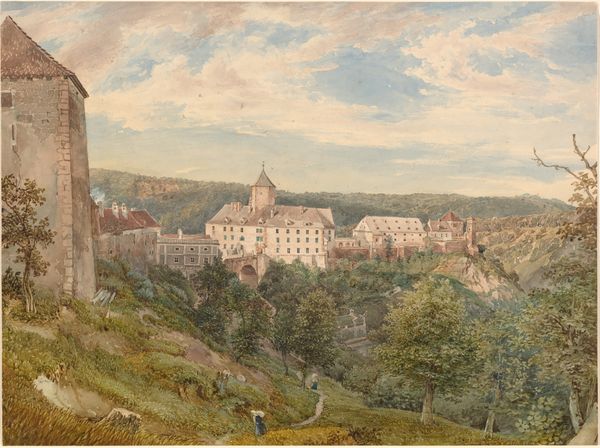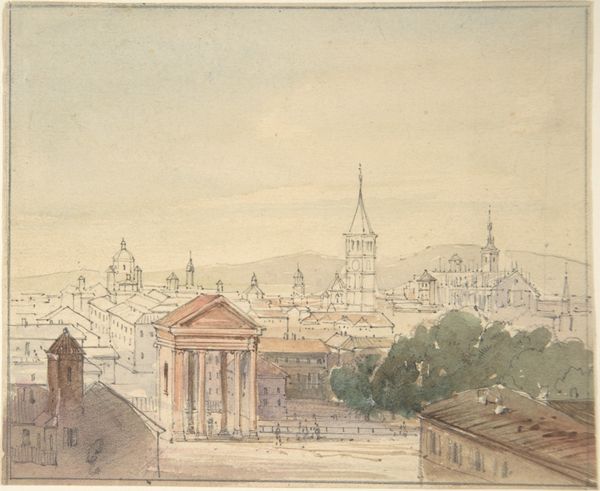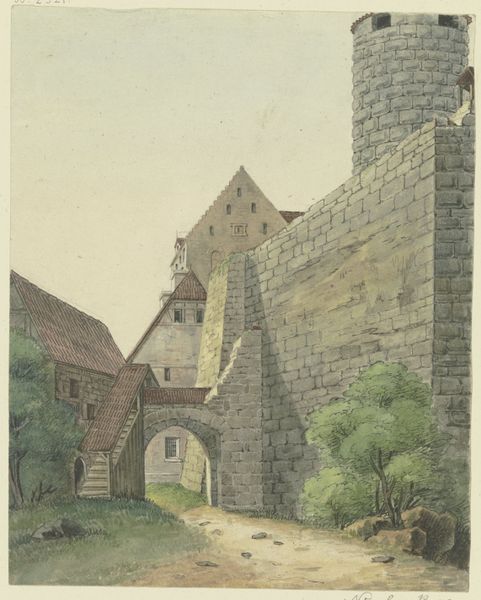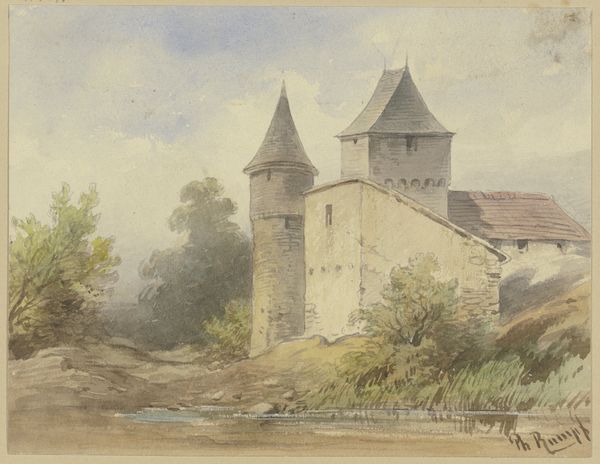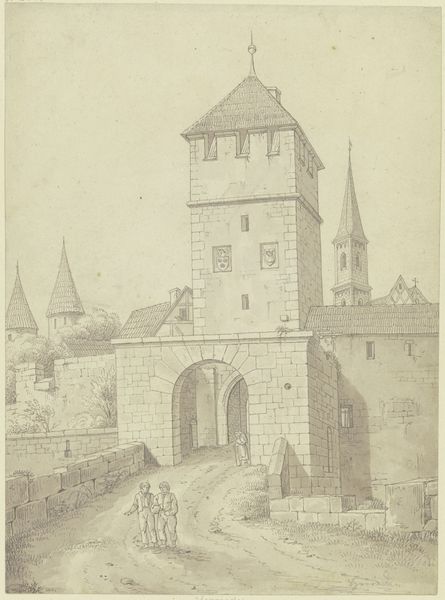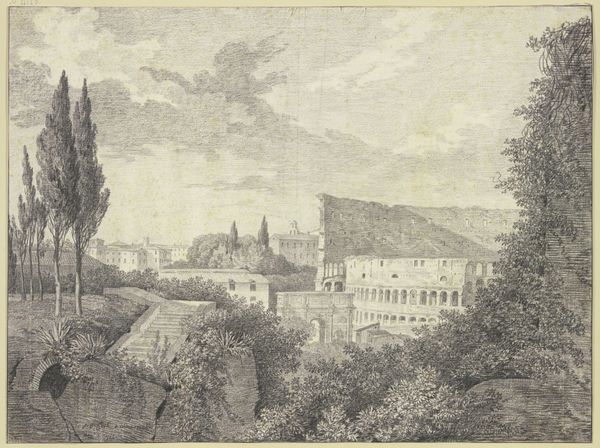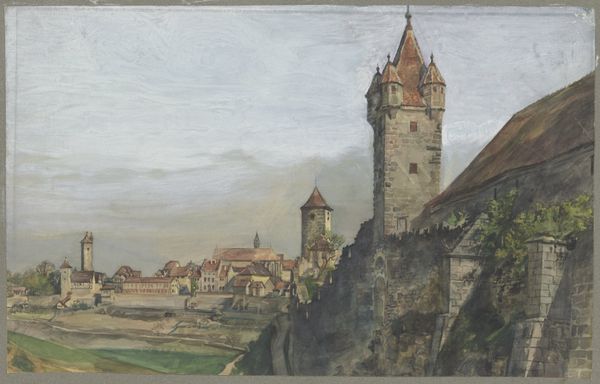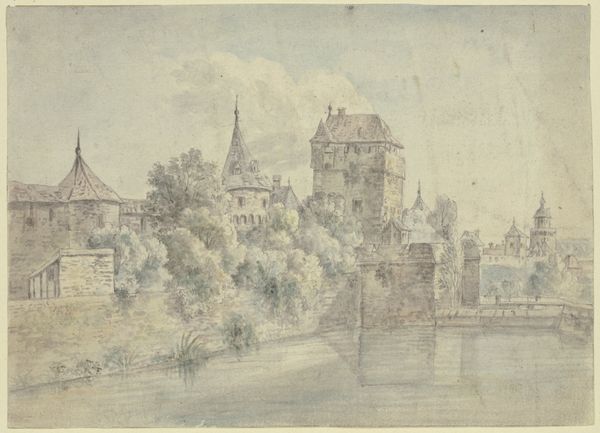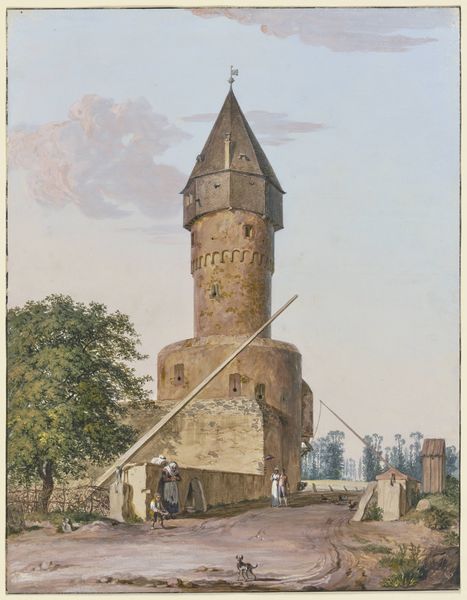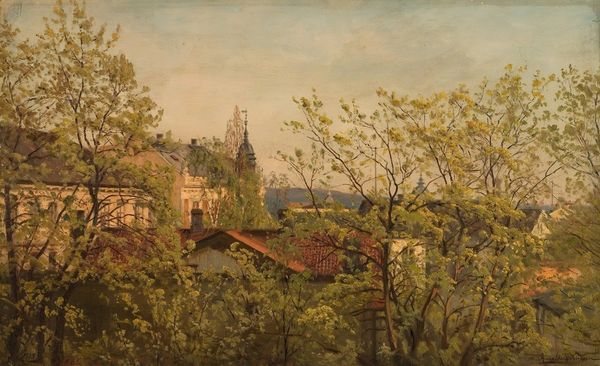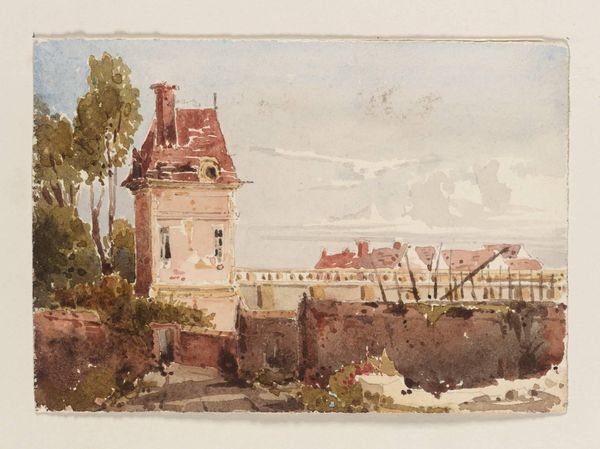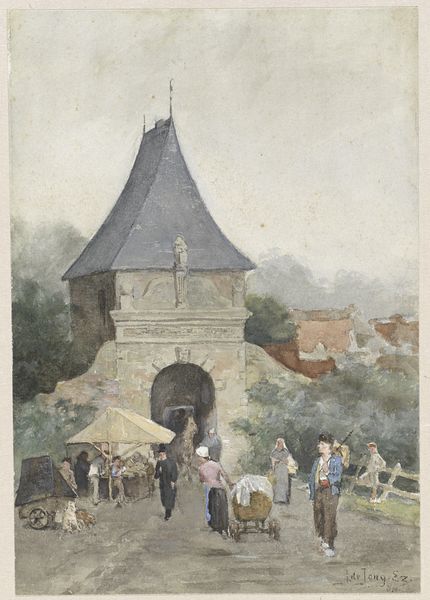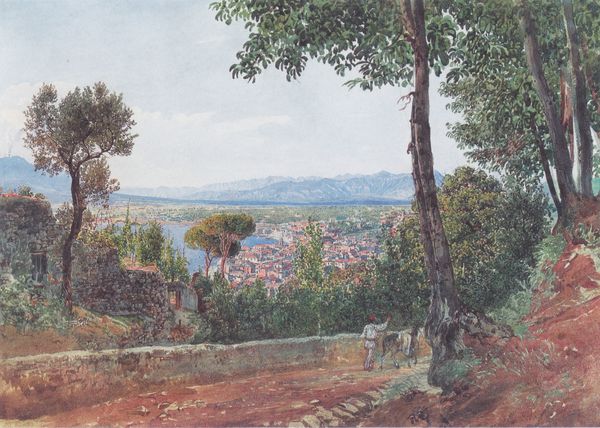
Dimensions: 38.5 x 27.5 cm
Copyright: Public domain
Editor: So, this is Rudolf von Alt's "The Spittler in Nuremberg," created in 1856 using watercolor. It has this kind of subdued, romantic feel, but I'm also drawn to the intricate detail. How do you read it? Curator: It's interesting to consider this watercolor as a record of production. Alt is depicting Nuremberg at a moment of transition. Notice how meticulously he renders the medieval architecture—the stones, the textures of the walls. But in the background, you see those smokestacks, right? Editor: Yeah, I spotted them. The industry seems distant, but it's definitely there. Curator: Exactly! Alt is employing watercolor—a portable and reproducible medium – to document a specific place undergoing industrialization. He is depicting both the remnants of the old and the looming presence of the new. How do you think his choice of medium informs the viewer's perception of the city's evolution? Editor: I hadn't thought about it like that! It is like the fragility of watercolor captures the ephemeral nature of what he's documenting: a world on the cusp of radical change, maybe even the transformation of labor itself? Curator: Precisely! And the choice of viewpoint too - he has selected this vantage point very deliberately to capture that tension. Consider the availability of such art through the market; even its status as something "collectable." Editor: This makes me see how his landscape painting shows a complex negotiation between traditional forms and emerging realities. Curator: Exactly. We can use this lens to interrogate similar works. Thinking about materials and means, how can we understand art as both a product of and a commentary on its social and economic environment? Editor: That's a powerful shift in perspective; looking at the painting not just as an image but also as a piece of material evidence opens up many possibilities for understanding its meaning and its historical value.
Comments
No comments
Be the first to comment and join the conversation on the ultimate creative platform.
